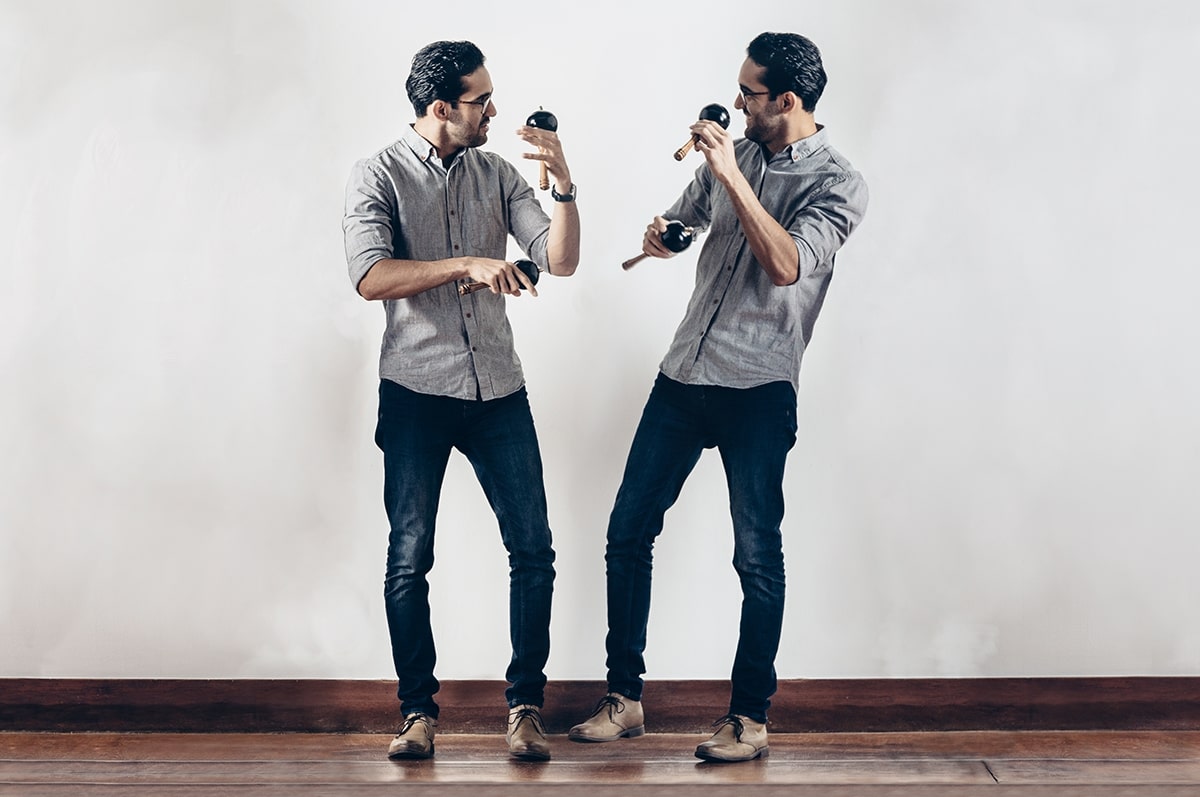Centuries before computers even existed, we already had what we now call music technology. Technology in the musical sphere is nothing more than the application of technical knowledge to the development of the expressive capacity of sound. Throughout history, music technology has included organological science as well as perfecting musical notation. We should remember that music is not only an auditory phenomenon but also a visual phenomenon. Musicians make music not only by listening but also by looking at either another musician playing, notes on a sheet music, or the screen of a computer while trying to interact with software.
Trátese de una laptop o de un par de maracas como instrumento, lo cierto es que la tecnología de la música mucho depende de su representación visual en dos dimensiones. Es precisamente esta dependencia lo que ha preocupado a Manuel Alejandro Rangel durante varios años. Y es por esto que, en las páginas que siguen, el maraquero, guitarrista y compositor venezolano presenta al mundo su insólita respuesta a esta preocupación. Se trata de un método para desglosar y representar visualmente la práctica interpretativa de las maracas venezolanas siguiendo un sistema adecuado a la técnica autóctona del instrumento, factor que suele transmitirse por tradición oral y no por escrito. A través de este nuevo método, Manuel Rangel sintetiza una práctica instrumental que superficialmente aparenta ser un mosaico arcano de gestos rítmicos para convertirla en una secuencia de movimientos relativamente sencillos pero muy precisos que se rigen por una coreografía totalmente lógica.
Let´s be clear: this method is the creation of a sensitive musician who lives in the world of the maraquero and possesses the logical mind of an engineer. Only an individual with these characteristics is able to figure out that the so-called "maracas" is not ONE instrument but they are actually TWO instruments that are made to play independent rhythms intertwined in continuous counterpoint. This is how Manuel Rangel understood that the notation of this counterpoint must obey its organological reality, making the bigram essential as a practical and highly idiomatic option to writing the seemingly complex gestures of the maracas.
Al independizar cada una de las dos taparas que conforman las maracas, y a la vez consolidar en solo cinco movimientos y varios enlaces el entendimiento del amplio repertorio gestual del maraquero contemporáneo, el autor nos regala lo que podríamos llamar la teoría del idioma de las maracas venezolanas, concientizándonos a través de este regalo sobre la existencia de una gramática que siempre ha fundamentado este idioma.
Así como Guido de Arezzo impulsó en el siglo XI la tecnología musical al enseñarnos un método sencillo de “solfear” canciones como nunca antes se habían cantado, diez siglos más tarde Manuel Rangel también impulsa la tecnología musical al enseñarnos un método sencillo de escribir e interpretar composiciones inéditas que exigen maracas en sus plantillas instrumentales. Es precisamente en el contexto de una obra contemporánea con protagonismo de las maracas que me he visto mínimamente involucrado como partícipe de este avance tecnológico del siglo XXI. Gracias a que Manuel Rangel se vio ante el reto de descifrar la parte solista de mi concierto para maracas y orquesta, hoy me encuentro escribiendo el prólogo de este método que estoy seguro ayudará a reconciliar la visión musical del compositor contemporáneo y la técnica endógena de las maracas venezolanas.
Considero que es una enorme suerte poder vivir este proceso y constatar que los avances tecnológicos a lo largo de la historia de la música no ocurrieron como resultado de caprichos artísticos, sino más bien como respuesta a deficiencias o necesidades interpretativas.
Finally, it is important to mention that I trust that readers will not interpret this method as a call to put the music notation shackles on a language that has existed perfectly well as an oral tradition. Rather, it is my hope that this method is interpreted as an option to free the language of the maracas from the limitations that the strictly auditory world imposes upon it, adding another dimension through which interpreters, musicologists, and composers can approach this language in a way that is more intimate and dare I say more authentic.



Comments (No Comments)
Comments are closed here.